Nov 15, 2018
By Lyta Hamm, Solano County Herbalist and Wellness Educator
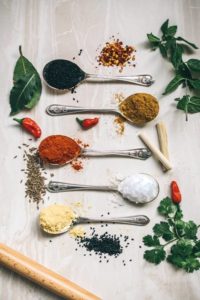 With the days growing colder; the winter and cold and flu season is upon us. Practicing good self-care and incorporating herbs and spices in our diet can help keep our health and immunity strong; increasing our odds of staying well and not getting as sick when we do catch something.
With the days growing colder; the winter and cold and flu season is upon us. Practicing good self-care and incorporating herbs and spices in our diet can help keep our health and immunity strong; increasing our odds of staying well and not getting as sick when we do catch something.
BASIC HEALTH PROMOTING PRACTICES AND REMINDERS TO STAY WELL:
- Sleep 7-8 hours a night. Sleep is an underutilized health elixir with many benefits for your health, immunity and mood.
- Practice stress reduction in the way that best works for you, whether it is a walk in nature, laughing with friends or yoga and meditation.
- Get some physical movement in each day, you don’t have to go to a gym; every minute of any physical movement and stretching counts!
- Hydrate! You might not be as thirsty in the winter months, but you still need water for optimum health.
- Eat well and eat more fruits and vegetables which are packed full of vitamins, minerals and micronutrients that keep healthy and ward off disease.
- Add more herbs and spices to your diet!
SPICE UP YOUR LIFE!
Many commonly used culinary spices and herbs have immunity and digestive enhancing properties as well as making our food taste better. Traditionally, most cultures incorporate many spices and herbs in their daily diet to maintain health and prevent illness. Basic food seasonings such as garlic, ginger, hot chilies, horseradish, rosemary, oregano, thyme, basil, sage, turmeric and cinnamon are all useful, especially in the winter season, to promote our vitality.
WANT TO LEARN MORE?
Attend the “Spice up Your Life and Fire Cider Demo” workshop this month and learn how to use more of the herbs and spices that are widely available and in your cupboard. Learn how to make infused vinegars and watch a demonstration of how to make Fire Cider!
- WHAT: “Spice up Your Life” workshop on using spices and herbs to stay healthy and Fire Cider demo
- WHO: Presented by Lyta Hamm, Herbalist and Wellness Educator
- WHERE: Tune Up Massage Works, located at 1212 Georgia St. Vallejo, CA 94590
- WHEN: Saturday, December 15, 2018 1:00 pm – 3:00 pm
- COST: $40 includes a bottle of Fire Cider vinegar to take home
If you can’t make it to the workshop, and still want to make a batch of Fire Cider vinegar, learn from the original creator of Fire Cider, herbalist Rosemary Gladstar, in this video: https://www.youtube.com/watch?v=JU8U0bDmXks
Oct 1, 2018
By Marlen Otten, Board Secretary, Sustainable Solano
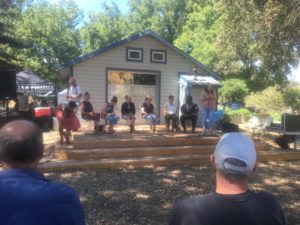 A new movement is emerging throughout the Bay Area where women are connecting to collaborate and embrace their visions for a sustainable and regenerative future for all. Conversations arise about the concepts of abundance, sustainability and what it means to be “regenerative”.
A new movement is emerging throughout the Bay Area where women are connecting to collaborate and embrace their visions for a sustainable and regenerative future for all. Conversations arise about the concepts of abundance, sustainability and what it means to be “regenerative”.
To explore these concepts more deeply, Alexis Koefoed of Soul Food Farm had envisioned for a long time to host a special event at her Soul Food Farm on the outskirts of Vacaville. On Saturday, September 22, 2018, this vision became a reality when women and men gathered at her farm for the first-ever “Women of Abundance: Women Entrepreneurs in the Regenerative Culture, Economy, and Community” event.
The key theme of this gathering was the exploration of the meaning of “regenerative”. It was proposed that “regenerative” is defined as a “living, evolving and naturally functioning environment where abundance and resilience are recurring outcomes of its underlying health”. This idea is closely linked to wide-ranging economic factors throughout our communities in Solano County and the Bay Area. To create regenerative local economies, awareness and education help strengthen the relationship with local food producers and consumers towards an ecologically balanced system. “Regeneration” is also the central theme of the work at Sustainable Solano. Our interest in and commitment to regeneration is at the heart of what we do as we continue to work on our vision for an environmentally and economically sustainable and socially just local food system in our county.
At this unique gathering, a panel of six successful Bay Area women entrepreneurs and farmers was led in discussion by Erin Walkenshaw, who is part of a new movement of spirited women in the Bay Area who are breaking new ground in the world of farming. The panel included Kelly D. Carlisle of Acta Non Verba: Youth Urban Farm Project, in Oakland, Elisabeth Prueitt, co-founder of Tartine Bakery in San Francisco, Nicolette Hahn Niman of Niman Ranch in Bolinas, Rebecca Burgess, Executive Director of Fibershed and Chair of the Board for Carbon Cycle Institute, Helena Sylvester, co-owner and lady farmer at Happy Acre Farm and Jessica Prentice, co-founder of Three Stone Hearth, the nation’s first Community Supported kitchen.
The panel of women leaders shared in one word about the stage where they are at currently, which ranged from transitioning to transformation, surrendering and doing less, highlighting how there is an ebb and flow in life while maintaining a sense of abundance. The participants explored their individual meaning of abundance and their vision for a regenerative agriculture – how to build and shape the traits that give women the strength and empowerment to lift themselves up to continue their work.
The panelists also revealed lessons women can use to reaffirm the support they have historically shared with one another to become successful and what they would do when things get tough, including the need to be in communication with each other. They examined the abundance model versus the competition model, the role of money and power as well as the meaning of equality versus fairness, or the lack thereof, in today’s society. All agreed the need for policies that would support healthy soils as part of a healthy ecology.
This conversation about regeneration and abundance was topped off with culinary delights by local Solano County producers. Attendees we able to explore the goodness of local olive oil and farm eggs, honey by Pleasants Valley Honey Co., fragrant lavender products by Girl on the Hill and they were able to enjoy local oven-baked pizza by Bella Fiamma and local organic cream by Documentary and portrait photographer Paige Green of Petaluma shared her inspiring exhibition of panelist portraits under the big olive tree, where attendees shared inspiring paper notes with their interpretation of the meaning of abundance.
We are grateful for Alexis Koefoed’s vision and taking the initiative to make this inspiring event happen. Events like this bring together the hearts and minds within the community and empower participants to take part in the creation of a sustainable and regenerative future we strive for, and we look forward to the next event.
Sep 16, 2018
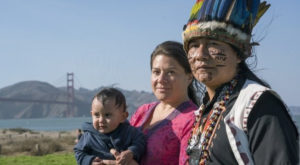 [Read SF Chronicle full article here]
[Read SF Chronicle full article here]
“The accelerated destruction of the sacred headwaters of the Amazon in Ecuador and Peru alone will disrupt the entire Earth’s distribution of rain.”
As leaders of the Sapara people, part of the confederation of 11 indigenous nations of the Ecuadoran Amazon living in harmony with nature in the most biologically diverse terrestrial ecosystem on Earth, we have made the long trek to the Global Climate Action Summit in San Francisco for reasons that may surprise Americans and other natives of highly developed countries.
Most citizens know by now that climate change has gone beyond the threat of disrupting the delicate balance and interconnection among the nearly 4 million species of plants and animals in the Amazon (one-third of all species on Earth).
Most know that the ecology of the vast Amazon rain forest is being jeopardized by flagrant, irresponsible, and visionless drilling, logging, mining, and the slash-and-burn clearing of thousands of acres of pristine forest each day. Imagine the overwhelming sight if every tree and bush between San Francisco and San Mateo were leveled today. And then between San Mateo and Palo Alto tomorrow. And then on to Cupertino the day after. Some know that illegal and immoral disrespect for both our land and culture moves entire indigenous nations closer to extinction, along with the ancient knowledge base that our remaining elders possess.
That is our reality, but we did not come to California to ask to be saved.
The real reason we have made the 30-hour journey by foot and canoe, small propeller plane, and bus, and then international flight from our capital, Quito, to San Francisco is to deliver an urgent message to the chiefs of industry, the policymakers, and to citizens who are caught in the trance of short-term consumption: The hectic pursuit of material gain is not sustainable.
The accelerated destruction of the sacred headwaters of the Amazon in Ecuador and Peru alone, a 60-million-acre area more than half the size of California, will disrupt the entire Earth’s distribution of rain. Two and a half acres of our forest contains more species of trees than are found in the entire United States. The rivers within the clouds above our forests are larger and mightier than the Amazon River itself. They drive the planetary weather system and replenish the Earth’s cycle of fresh water. Which means the fresh water that comes out of your faucet — and the long hot showers you enjoy each morning in America or Europe or Asia — are in jeopardy.
We are here to plead with you to see that our survival is yours too.
As guardians of the Amazon for thousands of years, we know intuitively when danger is near. Our belief system is based on what our ancestors observed in the natural world. Predating Western civilization, our ancestors identified the energies and powers in all living things as spirits. As you may go to church or temple or mosques to connect with your deity, we grow up listening to the messages that come from our symphony of trees and plants, the oldest and most original species still living on Earth.
We observe the transformation of animal life, the habits of our birds, the migration of our insects, the power in our waterfalls, and the voices from our caves. Our spiritual tools for knowing are antecedents to western philosophy and scientific enquiry, and the core curricula of epistemology.
Our culture does not know the dream of the individual, the single person. We have never lived with the dream of the self-made man. We only know a world of symbiotic coexistence, one universe, and shared perpetual interconnectivity. And that is what we wish to share, considering the destruction of the headwaters of the Amazon and the “aerial rivers” of vapor will affect both the residents of your Fisherman’s Wharf and our Sapara community of Naku.
We are the parents of a beautiful 11-month-old boy named Tsamaraw, which means “neutral energy” in our Sapara language, which itself is nearing extinction. Tsamaraw’s future is intricately connected with the lives your babies also can expect. We come to San Francisco as an act of love for all the babies.
We bring an alert. We know how Americans have such gratitude and pride in their first responders when danger and disaster strikes. Think of us as the first responders who arrive before an impending catastrophe.
We come to add the indigenous voice to the plethora of voices that need to be heard, the politicians, the economists, the entrepreneurs, the scientists, the Pachamama Alliance members, and even the skeptics.
Our country has a painful history of industrial pollution with toxic waste of oil extraction entering our water table, provoking the rise of cancer, and contaminating the plants we use for food and for medicine, many of which contain the very source of medicines that international pharmaceutical companies have used to manufacture profitable and life-saving treatments and cures. And most of that oil from our Amazon is exported to refineries in California also polluting your communities. But we don’t come to blame or to point fingers.
We’ll be in San Francisco to listen to all the others. We’ll listen to the corporations and mining and oil companies, the loggers and the climate deniers, but please listen to the message we bring from the heart of the planet’s hydrological system.
On behalf of the 1,000 remaining Sapara, the 16,000 Achuar, and the 150,000 other indigenous people in the sacred headwaters of the Amazon, we will be in San Francisco to embrace all living souls, to share a life-affirming message direct from our collective heart, and to invite you to exit from a trance of reckless development and consumption. That trance forgets that the world we pass on to our son, Tsamaraw, and to your children, and theirs, embodies the future that we would want to be remembered for, one that is guided by Nature from which we come and to which we belong.
We are in San Francisco to help you change the dream of the modern world.
Manari Ushigua, a shaman, is a leader of the Sapara Nation. Belen Paez, his life partner, directs the Pachamama Alliance in Ecuador and co-ordinates the Amazon Sacred Headwaters initiative.
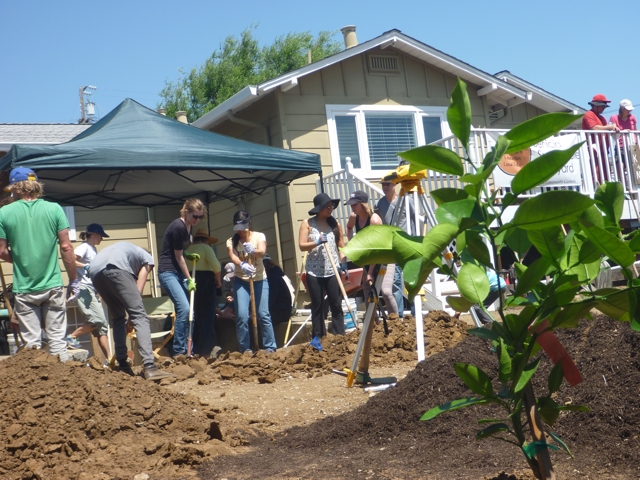
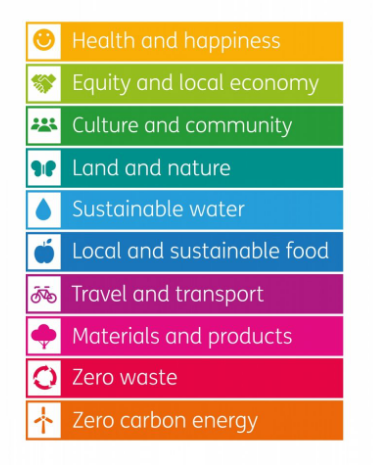


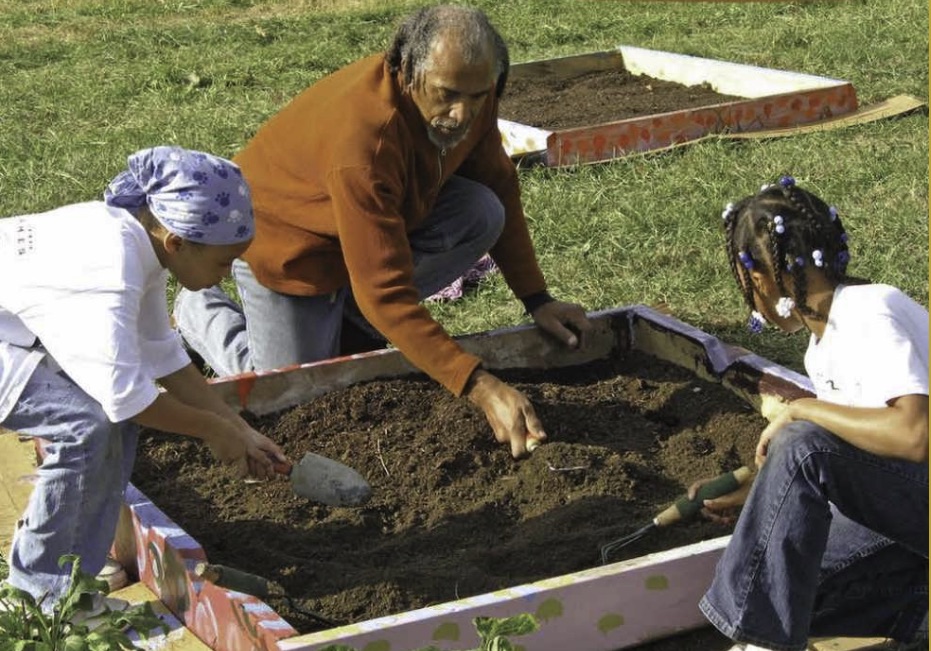
 With the days growing colder; the winter and cold and flu season is upon us. Practicing good self-care and incorporating herbs and spices in our diet can help keep our health and immunity strong; increasing our odds of staying well and not getting as sick when we do catch something.
With the days growing colder; the winter and cold and flu season is upon us. Practicing good self-care and incorporating herbs and spices in our diet can help keep our health and immunity strong; increasing our odds of staying well and not getting as sick when we do catch something. A new movement is emerging throughout the Bay Area where women are connecting to collaborate and embrace their visions for a sustainable and regenerative future for all. Conversations arise about the concepts of abundance, sustainability and what it means to be “regenerative”.
A new movement is emerging throughout the Bay Area where women are connecting to collaborate and embrace their visions for a sustainable and regenerative future for all. Conversations arise about the concepts of abundance, sustainability and what it means to be “regenerative”.
